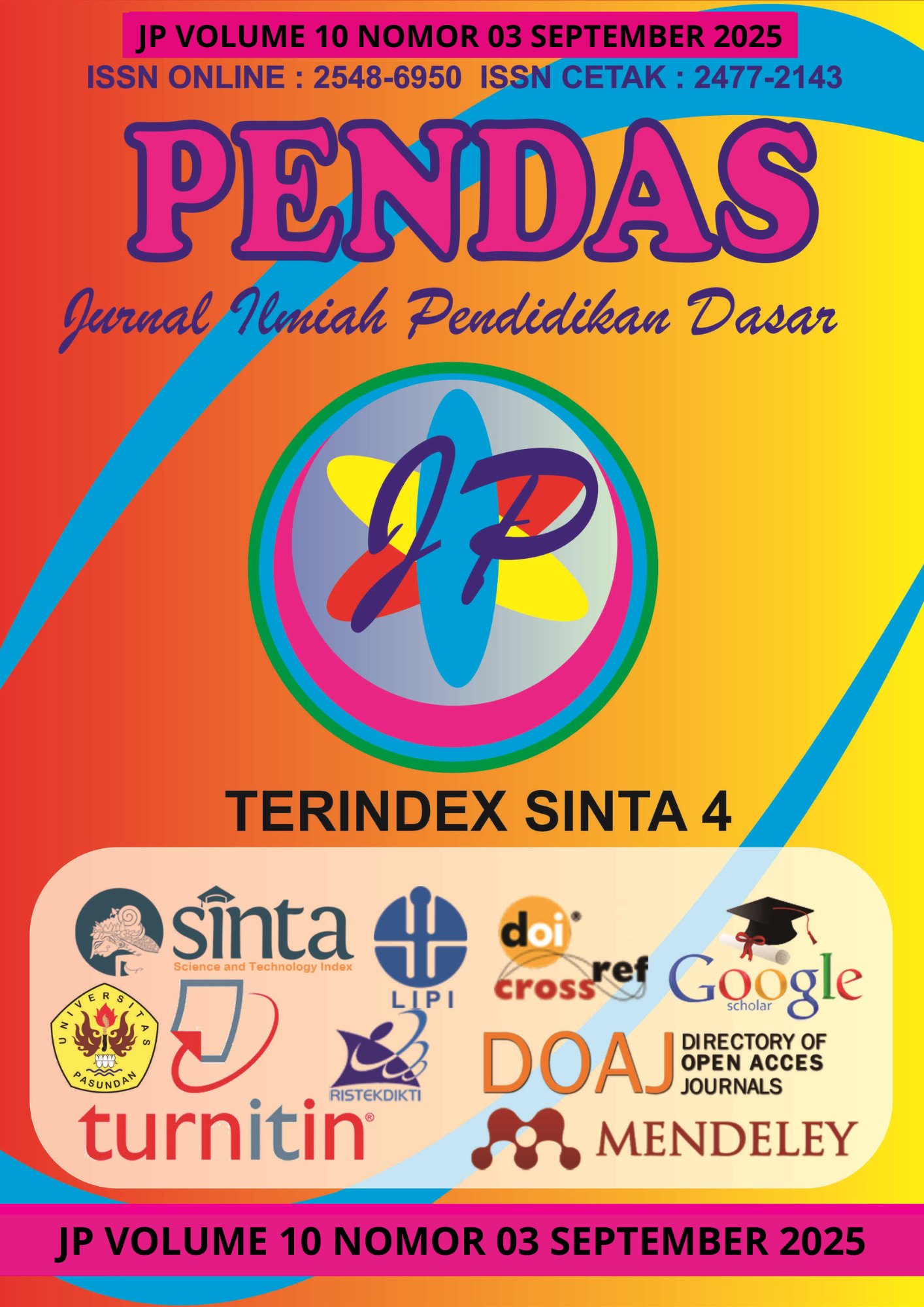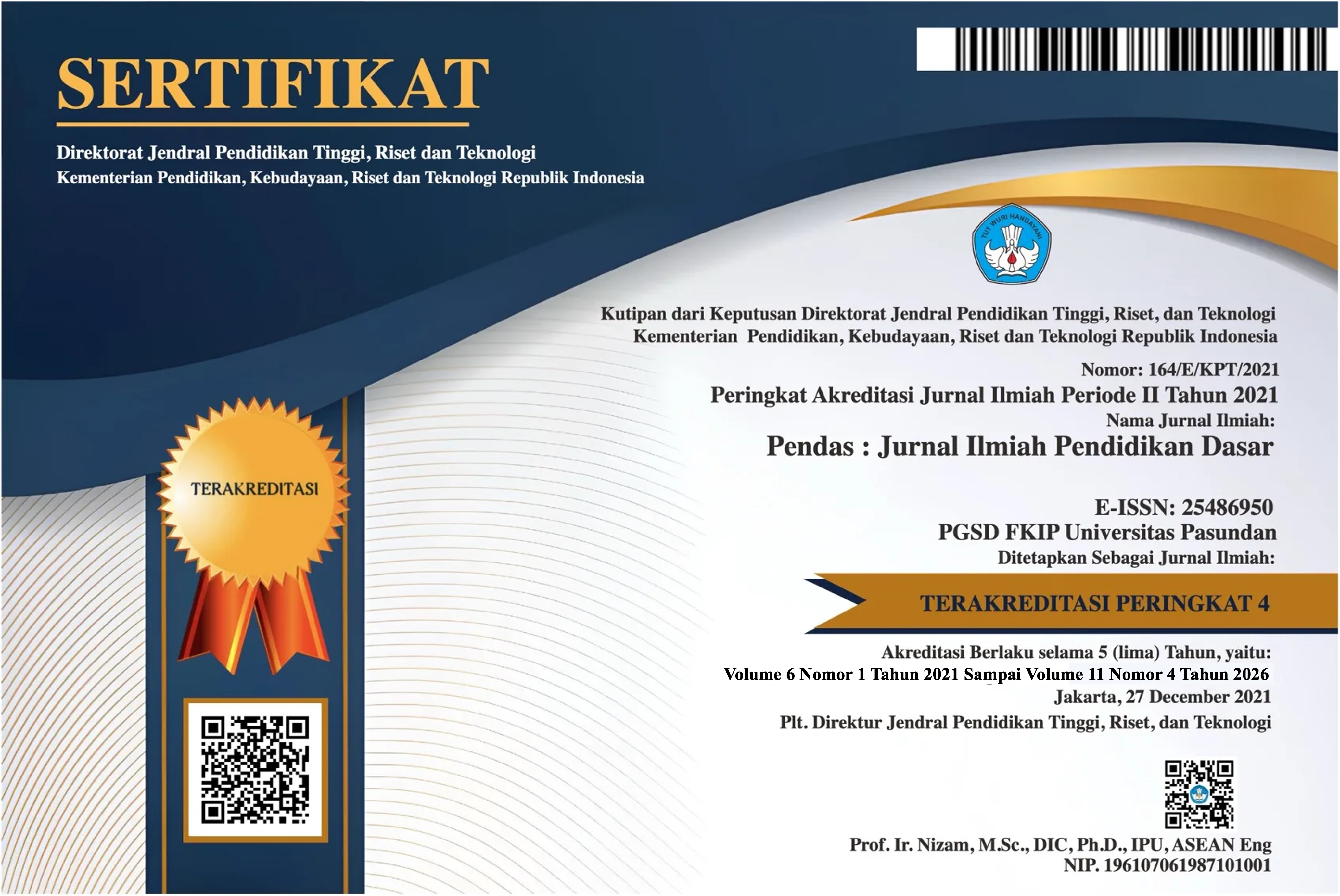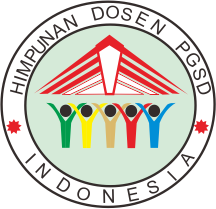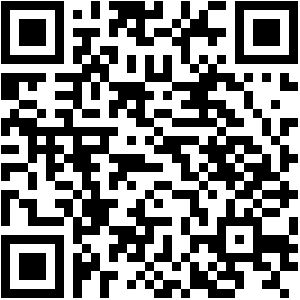KEMAMPUAN BERPIKIR KREATIF SISWA DALAM MEMECAHKAN MASALAH IPAS MELALUI MODEL PEMBELAJARAN PROBLEM BASED LEARNING DENGAN MEDIA BERBASIS VIDEO ANIMASI
DOI:
https://doi.org/10.23969/jp.v10i03.31418Keywords:
audio visual, motivation, problem based learningAbstract
Creative thinking skills, as one of the 21st-century competencies, need to be developed from an early age, especially in the learning of Science and Social Studies (IPAS). However, IPAS instruction in elementary schools still tends to be conventional, teacher-centered, and lacks the use of instructional media, thereby limiting active student engagement in problem-solving activities. This study aims to describe the implementation of the Problem-Based Learning (PBL) model supported by animated video media, as well as to describe students’ creative thinking abilities in solving IPAS-related problems. The study employed a descriptive qualitative approach with subjects consisting of one teacher and six fifth-grade students from SD Negeri 1 Batokan, selected based on their Creative Thinking Ability Level (Tingkat Kemampuan Berpikir Kreatif/TKBK). Data collection techniques included observation, problem-solving tests, and in-depth interviews based on four indicators of creative thinking: fluency, flexibility, originality, and elaboration. The results showed that the implementation of PBL with animated video media facilitated interactive and contextual learning and promoted varied development of students' creative thinking abilities. Students in the very creative category (TKBK 4) fulfilled all creative thinking indicators, while those in the creative (TKBK 3) and moderately creative (TKBK 2) categories excelled in only some of the indicators. The implications of this study indicate that integrating the PBL model with visual media such as animated videos can serve as a relevant and applicable alternative to foster students' creativity and improve the quality of IPAS learning in elementary schools.Downloads
References
Daftar Pustaka ditulis mengacu
kepada standar APA 6 th dengan
panduan sebagai berikut :
Buku :
Arends, R. I. (2012). Learning to
teach ninth edition (9th ed.) (9thed.). USA: Library of Congress
Cataloging.
Ghaniem, A. F., Rasa, A. A., Oktora,
A. H., & Yasella, M. (2021). Ilmu
Pengetahuan Alam dan Sosial.
Pusat Perbukuan Badan
Standar, Kurikulum dan
Asesmen Pendidikan
Kementerian Pendidikan,
Kebudayaan, RIset dan
Teknologi.
Miles, M. B., & Huberman, A. M.
(1994). Qualititative Data
Analysis (R. Holland (ed.); 2dn
ed). SAGE Publication; Inc.
Moelong, L. J. (2018). Metodologi
Penelitian Kualitatif. PT Remaja
Rosdakarya.
Moraes, J. V. de, & Castellar, S. M.
V. (2010). Scientific Literacy,
Problem Based Learning And
Citizenship: A Suggestion For
Geography Studies Teaching.
19.
Sani, R. A. (2017). Pembelajaran
Saintifik untuk Implementasi
Kurikulum 2013 (Y. S. Hayati
(ed.); Issue October). PT Bumi
Aksara.
Sugiyono. (2019). Metode Penelitian
Kuantitatif, Kualitatif, dan R&D
(Sutopo (ed.); Cet. 1). Alfabeta.
Torrance. (1974). The Torrance Tests
of Creative Thinking - Figural or
Verbal : Which One Should We
Use ? 4(2), 302–321.
https://doi.org/10.1515/ctra-2017-
0015
Jurnal :
Afifah, D. S. N., Munawaroh, S.,
Suja’i, I. S., & Putri, I. M. (2021).
Students ’ Creativity in Project
Based Learning. 542(Ancosh
2020), 376–379.
Fauziah, P. (2018). Meningkatkan
Kemampuan Berpikir Kreatif
Dalam Pembelajaran IPS Melalui
Penerapan Pendekatan Problem
Based Learning Pada Siswa
Kelas V SD Negeri Bendungan
Hilir O1 Pagi Jakarta Pusat.
Kurniawan, A. (2024). Pengaruh
Model Problem Based Learning
Berbantuan Media Video
Animasi Terhadap Kemampuan
Kognitif Siswa Kelas V SD
Negeri 1 Jati Agung.
Maulidina, I. S. (2021). Efektivitas
Media Video Dengan
Pendekatan Problem Based
Learning Pada Materi Letak,
Luas, Batas Dan Karakteristik
Wilayah …. Jurnal Mahasiswa
Teknologi Pendidikan, 11(6).
https://ejournal.unesa.ac.id/index
.php/jmtp/article/view/44132/375
37
Napfiah, S. (2018). Analisis tingkat
kemampuan berpikir kreatif
dalam pemecahan masalah
matematika ditinjau dari gaya
kognitif. 4(1), 80–91.
Rindiani, G. (2024). Penerapan
Model Pembelajaran Problem
Based Learning Berbantuan
Video Animasi Untuk
Meningkatkan Pemahaman
Konsep Siswa Pembelajaran
IPAS Kelas IV Di Sekolah Dasar.
April.
Widiasanti, I., Ramadhan, N. A.,
Alfarizi, M., & Fairus, A. N.
(2023). Pemanfaatan Sarana
Multimedia dan Media Internet
sebagai Alat Pembelajaran yang
Efektif. Jurnal Ilmu Pendidikan,
5(3), 1365–1375.
Zukhriya, R., & Noriza, D. (2024).
Kajian Teori : Kemampuan
Pemecahan Masalah Matematis
Siswa Ditinjau dari Adversity
Quotient Pada Model Brain
Based Learning Berbantuan MIT
App Inventor. 7, 921–927.
Downloads
Published
Issue
Section
License
Copyright (c) 2025 Pendas : Jurnal Ilmiah Pendidikan Dasar

This work is licensed under a Creative Commons Attribution 4.0 International License.



















